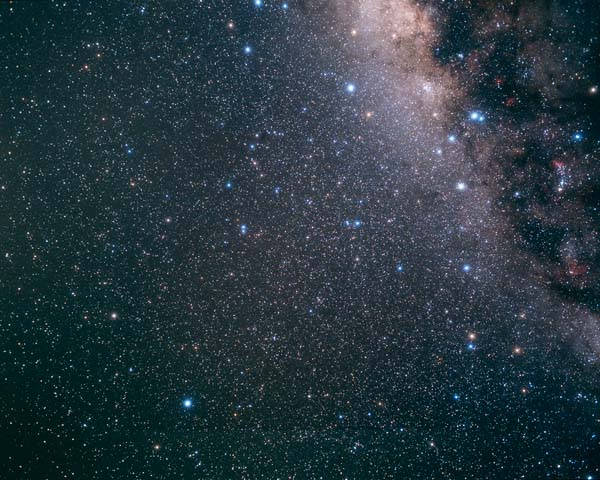DMI image reference Tel. « Previous || Next » Constellations A » H || Constellations I » V

Roll mouse over picture to see constellation outlines
Image and text ©2008 Akira Fujii/David Malin Images.
In the picture above north is at the top and the image covers 42.2 x 52.7 degrees.
Image centre is located at 18:51:13.2, -43:11:39 (H:M:S, D:M:S, J2000) Astrometric data from Astrometry.net.
Best seen in the early evening during August
Telescopium is a faint constellation that was named by Abbé Nicolas Louis de Lacaille during his stay at the Cape of Good Hope between 1751 and 1752. It is utterly undistinguished and is best remembered as that unremarkable piece of sky to the west of Ara and between the distinctive circlet of Corona Australis and Peacock (alpha Pavonis), the brightest star in Pavo. LaCaille's original name was Tubus Telescopium, however, in the way of antique telescopes, it was shortened for convenience.
The main named stars in the field shown are: (Greek alphabet)
Shaula (λ Sco), Girtab (Sargas, θ Sco), Kaus Australis (ε Sgr), Peacock (α Pav), Nunki (σ Sgr) Lesath (υ Sco) Ascella (ζ Sgr) Media (δ Sgr).
Adjoining constellations:
Ara, Corona Australis, Indus, Microscopium, Pavo, Sagittarius.